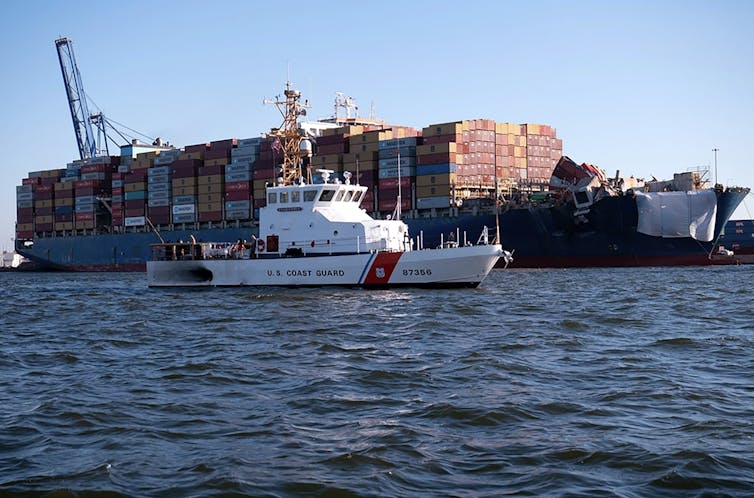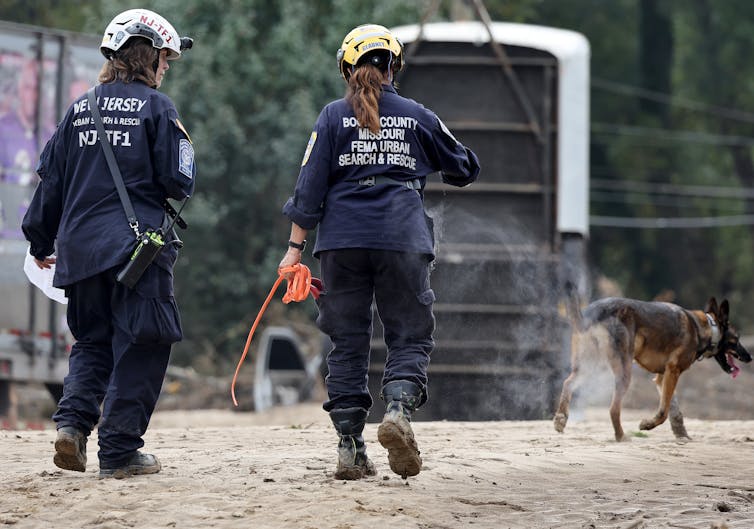Frank J. Cilluffo, Auburn University
The secretary of homeland security is the newest permanent member of the president’s Cabinet, overseeing the sprawling agencies and missions of the U.S. Department of Homeland Security and an annual budget exceeding US$62.2 billion.
Overall, the department – and the secretary who leads it – is charged with protecting the nation from all hazards. The department must respond to natural disasters, screen millions of aviation passengers a day, protect the president and other senior national leaders, fight domestic and international hackers, protect dams, power plants and other critical systems across the country, ensure border security and enforce immigration laws.
It is a massive bureaucracy with many critical national security functions. For example, devastating wildfires burning in and around Los Angeles in recent weeks have brought to the forefront the department’s role in coordinating disaster response and relief across federal, state and local governments, as well as with the private sector. At the same time, the Secret Service is leading the effort to ensure the security of the presidential inauguration, and cyberattacks continue to target U.S. infrastructure and government agencies.
The department’s history is relatively short. Immediately following the terror attacks of Sept. 11, 2001, then-President George W. Bush and other leaders realized that a potential contributing reason for the 9/11 tragedy was lack of a unified structure for various agencies with related security responsibilities. Bush established the White House Office of Homeland Security to coordinate the U.S. government’s response to, and mitigation of, terrorist threats facing the United States.
The office was headed by former Pennsylvania Gov. Tom Ridge, who went on to become the first secretary of homeland security when Congress formally established the department by law in 2002. For transparency, I served as a White House-based adviser to Ridge during that process as a special assistant to the president.

Petty Officer 3rd Class Christopher Bokum/U.S. Coast Guard via AP
A massive reorganization
When the department was created, a wide range of federal agencies was moved into the newly formed department from across the government. Some came from other Cabinet departments, including the Secret Service from the Treasury Department, as well as the Coast Guard and the then-new Transportation Security Administration from the Department of Transportation.
Also, elements from several different departments were rearranged to form groups within the new department. For instance, Customs and Border Protection, Immigration and Customs Enforcement and the Border Patrol consolidated elements from the Treasury, Justice and Agriculture departments, among others.
Other formerly standalone agencies, like the Federal Emergency Management Agency, were brought into the new department.
And new agencies were created under its umbrella, including what became the Cybersecurity and Infrastructure Security Agency, as well as elements that focus on science, technology and intelligence-gathering and analysis.
From the beginning, and continuing to the present, the department’s leaders faced significant challenges merging all those agencies – there were 22 being joined together. The details and process of melding all those agencies’ workplace cultures, personnel policies, missions and budget allocations are significant. For instance, some were military or quasi-military in nature, and others were entirely civilian organizations.

Mario Tama/Getty Images
Oversight complexity
But internal department challenges are just some of the vast responsibilities any secretary of homeland security faces.
In terms of congressional oversight, most Cabinet departments primarily report to a specific so-called “authorizing” committee of jurisdiction in the House of Representatives and in the Senate, in addition to the appropriations committees. But not the Department of Homeland Security, because it involved so much consolidation from existing entities across government.
There are homeland security committees in the Senate and the House of Representatives that were created to oversee the Department of Homeland Security. However, other committees were not made to cede their jurisdiction over the various agencies pulled into the department.
For instance, the House Transportation and Infrastructure Committee still retains primary legislative jurisdiction over FEMA and the Coast Guard. This means the department and its components must respond to requests for briefings, witness testimony, information and legislative drafting assistance from many committees and subcommittees in the House and Senate. Most federal agencies receive relatively cohesive, singular congressional oversight. By contrast, the Department of Homeland Security must answer to disparate oversight authorities that often inhibit reform and accountability.
In fact, despite the specific recommendation of the 9/11 Commission Report and urging from former department leaders, different elements of the Department of Homeland Security report to as many as 90 congressional committees and subcommittees.
Even within the executive branch, other departments sometimes view the Department of Homeland Security as the new kid on the block, both within the Intelligence Community and among other law enforcement and security-related agencies. This rivalry sometimes limits effective coordination across the government. It’s also a problem internationally because most allied and partner nations have more consolidated national security services. These difficulties hurt workers’ morale and threaten national security by continuing the lack of coordination the department was meant to prevent.

AP Photo/Susan Walsh
National political discourse
The secretary of homeland security is often a target for hot-button issues in Congress, the media and the public. That can complicate other work across the department.
For instance, immigration and border security policy has been a persistent and controversial issue in the United States. There are several border security agencies in the department. Coordinating all of their work is a challenge, but being a political target can make it harder for the secretary to simultaneously engage in the less politically sensitive missions of agencies like the Coast Guard, FEMA and the Secret Service.
The potential for political controversy also affects personnel within the agencies. Employees sometimes resent being affiliated with the larger department because of its sprawling, competing and sometimes politically charged activities. Many longtime personnel want to return to their original departments, while some within component agencies want to be set free of the department to operate more independently. This drags on morale, hurts retention and harms recruiting efforts for new personnel.
Despite these difficulties, the secretary of homeland security remains a critically important role within the president’s Cabinet, and the office will continue evolving as the department matures and threats to the nation’s security evolve.
The focus on counterterrorism that immediately followed 9/11 evolved into countering violent Islamist extremism around 2014 to reduce the likelihood that Americans might go overseas to fight with the Islamic State group or other terrorist organizations. And the increasing cybersecurity threats of today – whether from other countries like China or nonstate entities like international ransomware gangs – require rapid and continuous adaptation. The incoming administration will undoubtedly look to bolster border security enforcement at the southern border.
This story is part of a series of profiles of Cabinet and high-level administration positions.![]()
Frank J. Cilluffo, Director, McCrary Institute for Cyber and Critical Infrastructure Security, Auburn University
This article is republished from The Conversation under a Creative Commons license. Read the original article.






























































